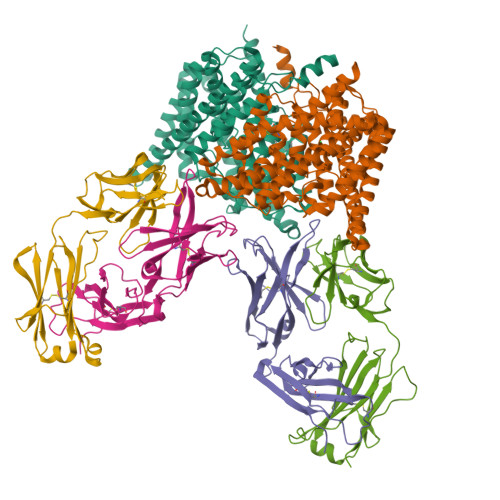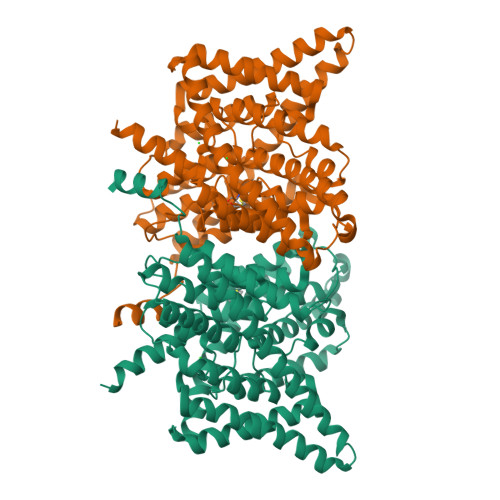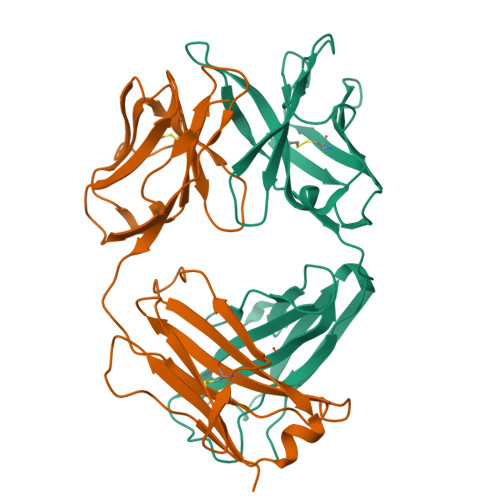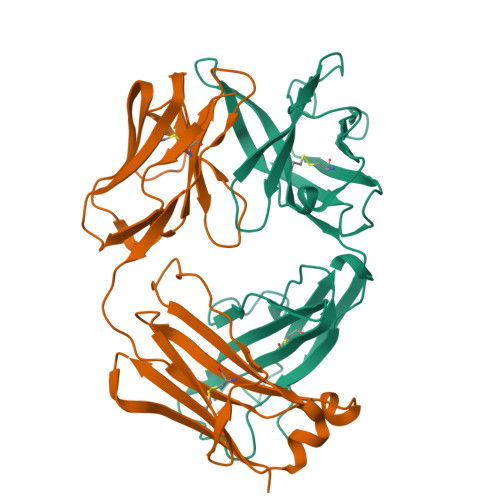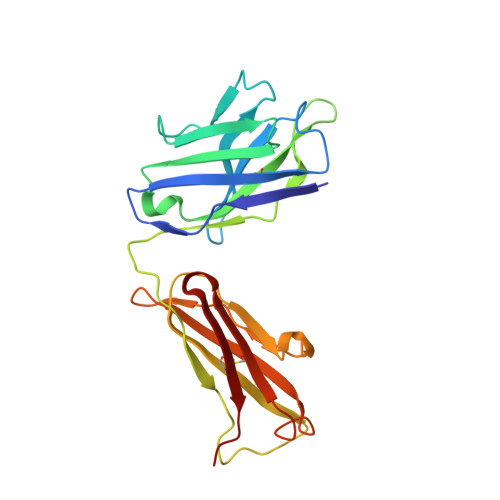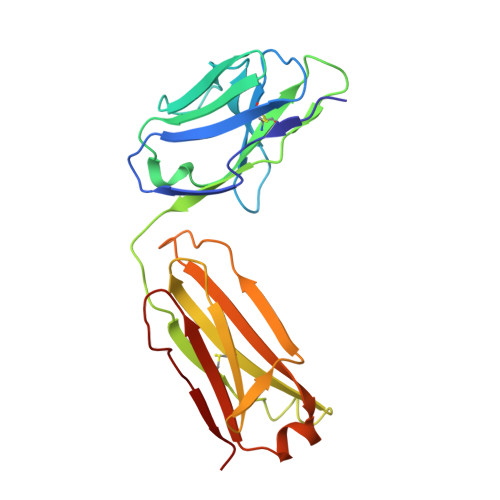Conformational changes required for H(+)/Cl(-) exchange mediated by a CLC transporter.
Basilio, D., Noack, K., Picollo, A., Accardi, A.(2014) Nat Struct Mol Biol 21: 456-463
- PubMed: 24747941
- DOI: https://doi.org/10.1038/nsmb.2814
- Primary Citation of Related Structures:
4MQX - PubMed Abstract:
CLC-type exchangers mediate transmembrane Cl(-) transport. Mutations altering their gating properties cause numerous genetic disorders. However, their transport mechanism remains poorly understood. In conventional models, two gates alternatively expose substrates to the intra- or extracellular solutions. A glutamate was identified as the only gate in the CLCs, suggesting that CLCs function by a nonconventional mechanism. Here we show that transport in CLC-ec1, a prokaryotic homolog, is inhibited by cross-links constraining movement of helix O far from the transport pathway. Cross-linked CLC-ec1 adopts a wild-type-like structure, indicating stabilization of a native conformation. Movements of helix O are transduced to the ion pathway via a direct contact between its C terminus and a tyrosine that is a constitutive element of the second gate of CLC transporters. Therefore, the CLC exchangers have two gates that are coupled through conformational rearrangements outside the ion pathway.
Organizational Affiliation:
Department of Anesthesiology, Weill Cornell Medical College, New York, New York, USA.








